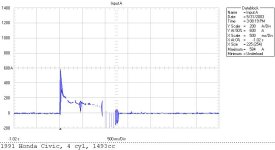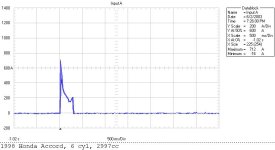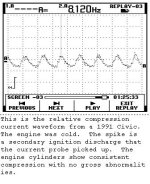R_squared
Silver Member
The third waveform is from a 1991 Honda Civic, 4 cylinder, 1493cc engine. The compression ratio is approximately 9:1. The inrush current equals 584 amps, but only for 20 or 30 milliseconds. The below ground potential spikes, to the right of the inrush peak are secondary ignition firings. The distributor cap was close to the battery cable and current clamp.


